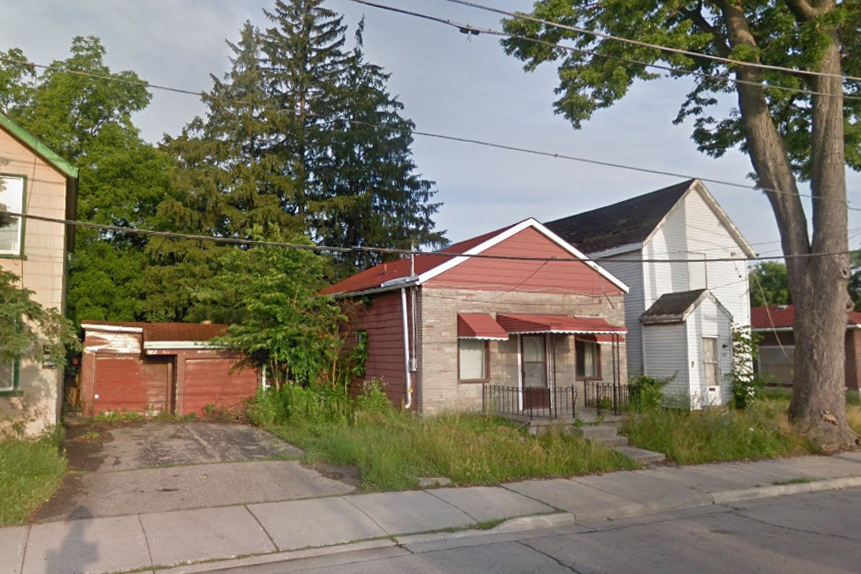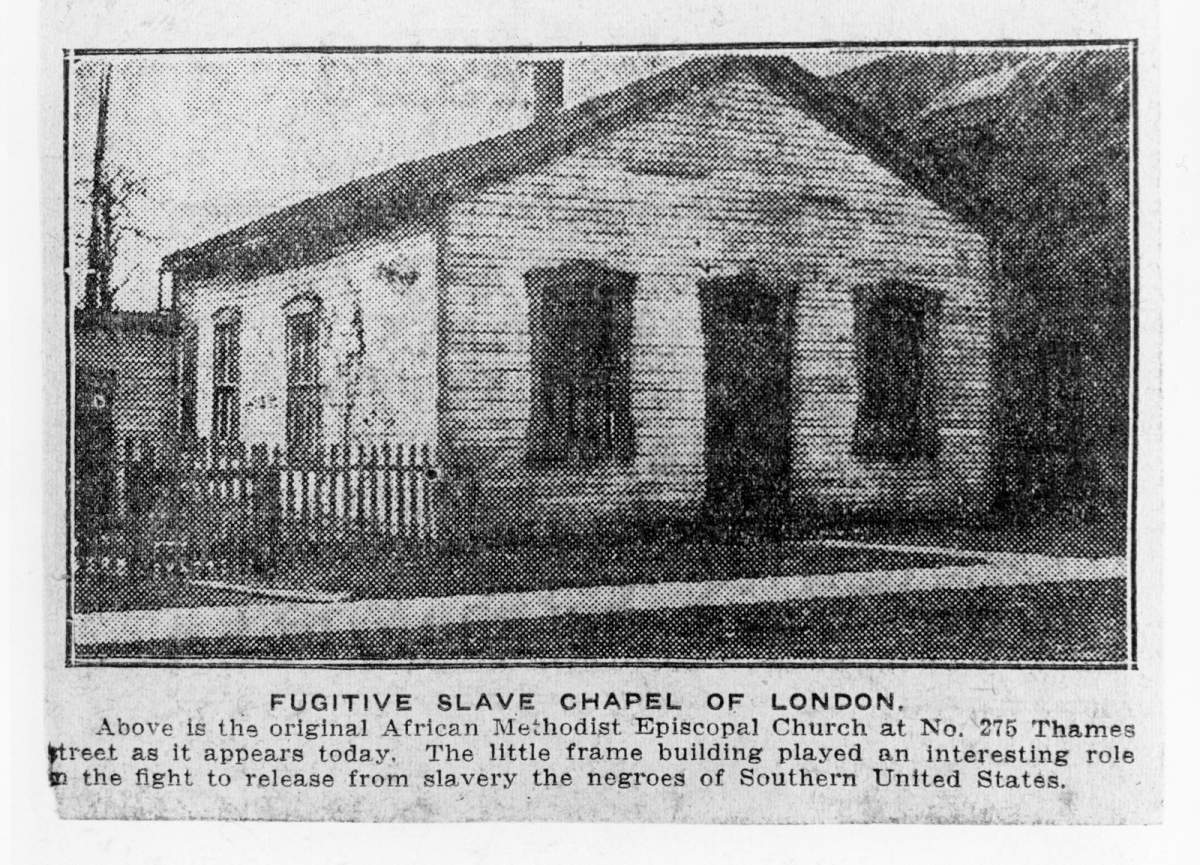A letter from four London councillors will be presented at next week’s city council meeting requesting that they approve a grant to save London’s Fugitive Slave Chapel.

A fundraising effort for the historic building has already raised $85,000 of an estimated $300,000 needed to restore and relocate the building to Fanshawe Pioneer Village (FPV) from its current home in the city’s SoHo neighbourhood.
However, there are concerns that with the building’s deteriorating condition, the restoration work needs to happen before next winter.
A joint letter from London councillors Mohamed Salih, Shawn Lewis, Elizabeth Peloza and John Fyfe-Millar is proposing council to make a one-time commitment of $71,000 from the city’s Community Investment Reserve Fund to assist with the costs.
“Time is of the essence. The building is in poor shape. It needs some attention right away, and the goal of the folks at Fanshawe Pioneer Village is to get it moved in on a foundation before next winter arrives so that they can get the building envelope sealed, so no further damage happens and then they can start working on the restoration pieces,” Lewis said.
“I don’t think that it’s possible to understate the heritage importance of this building. This is the only sort of standing structure we have left from the beginning of the Black community establishing roots here in London, those fleeing slavery from the southern U.S. and arriving here via the Underground Railroad.”
Because of the time sensitivity of the project, Lewis noted it is not possible to seek money through a business case in the next budget update and that other revenue streams are also made more difficult.

Get breaking National news
“We’re asking council to use our own council’s community investment reserve fund. It’s a small reserve fund that’s there for the discretion of council to use for really, really time-sensitive, important things that don’t really fit anywhere else,” he said.
Lewis is hopeful that between help from council and the money already raised, it will be enough to leverage $150,000 in federal funding from Cultural Spaces Canada for restoration work.
“The demonstrated financial support from the City of London also helps their campaign to build momentum within the community because it carries weight and shows that there’s community support for this to happen,” said Dawn Miskelly, executive director of Fanshawe Pioneer Village.
Miskelly said there is an urgency to protect the chapel from vandalism and further deterioration.
- Canadian woman charged with illegally crossing into U.S., kicking border agent’s face
- A new ‘cold’ war? Canada looks to bolster Arctic security, sovereignty
- Canadian furniture industry still ‘reeling’ after Trump pauses tariff spike
- Ottawa propose fines of up to $1M for violating foreign influence registry rules
“It’s a very historically significant building for our community and beyond. It’s one of the oldest surviving buildings that represent London’s Black history.”
Miskelly noted that they are working with the Black History Coordinating Committee, Black Lives Matter London, and the Congress of Black Women to develop an interpretive exhibit once the chapel is moved, that highlights the involvement of the Underground Railroad and the region’s diverse Black histories.
The campaign to save the chapel is being carried out with the support of local community groups, including Black Lives Matter London, the London Black History Coordinating Committee, The Chapel Committee and the London chapter of the Congress of Black Women of Canada.
More than $50,000 of the $85,000 already raised comes through the Chapel Project via the London Community Foundation.
Originally the African Methodist Episcopal Church, the chapel was erected along Thames Street in 1848 and served as a sanctuary for African Americans who had escaped slavery in the U.S. through the Underground Railroad and who had built homes and resided in what is now London’s SoHo neighbourhood.
“Chapel houses of worship were more than houses of worship to the Black community. They were kind of centres of the community.… They were meeting places,” Carl Cadogan, chair of the London Black History Coordinating Committee, one of the groups involved in the project, said in February.
“I think it was important for the community as they were trying to establish themselves in London and southwestern Ontario.… The first thing they would build is something like a church, because they serve many purposes.”
Land speculation brought on by the construction of the Great Western Railway in the 1850s brought wealth to the area, making it the richest Black community in Canada, according to a London Free Press report.
Through the years, ownership of the church changed, later becoming the British Methodist Episcopal Church in 1856 and then a private residency.
The building was spared from demolition in 2013 following calls from the community and relocated to Grey Street, where it has stood since.
In August 2021, it was revealed that the British methodist Episcopal Church of Canada, which owns the building, and the London and Middlesex Heritage Museum, the non-profit that owns and operates Fanshawe Pioneer Village, had entered into talks to gift the building and relocate it to the village.
“I think it’s important to know that at Fanshawe Pioneer Village this is going to enhance one of the regional tourist draws that we have in the city. We have children coming from schools all across the county and around the region to visit Fanshawe Pioneer Village, now they get to add a piece of the Black history of the region to that location,” Lewis said.
— with files from Matthew Trevithick













Comments